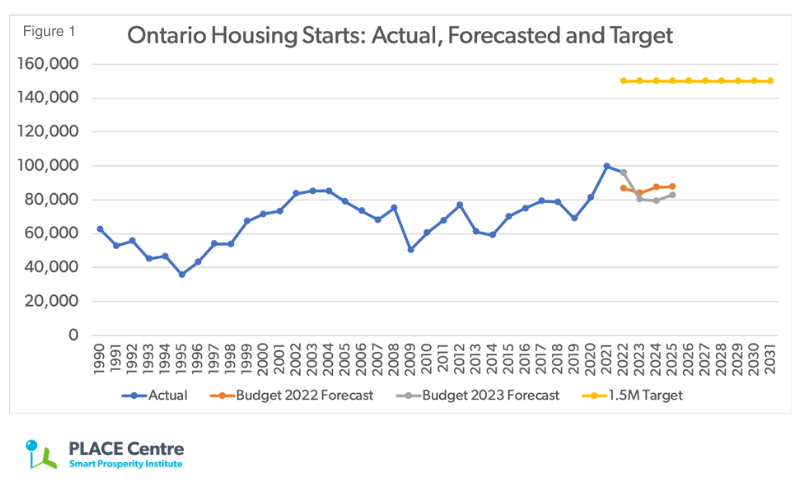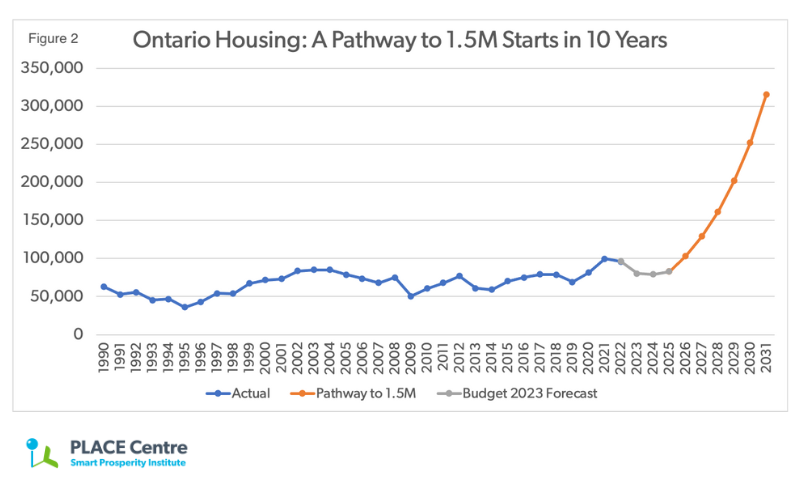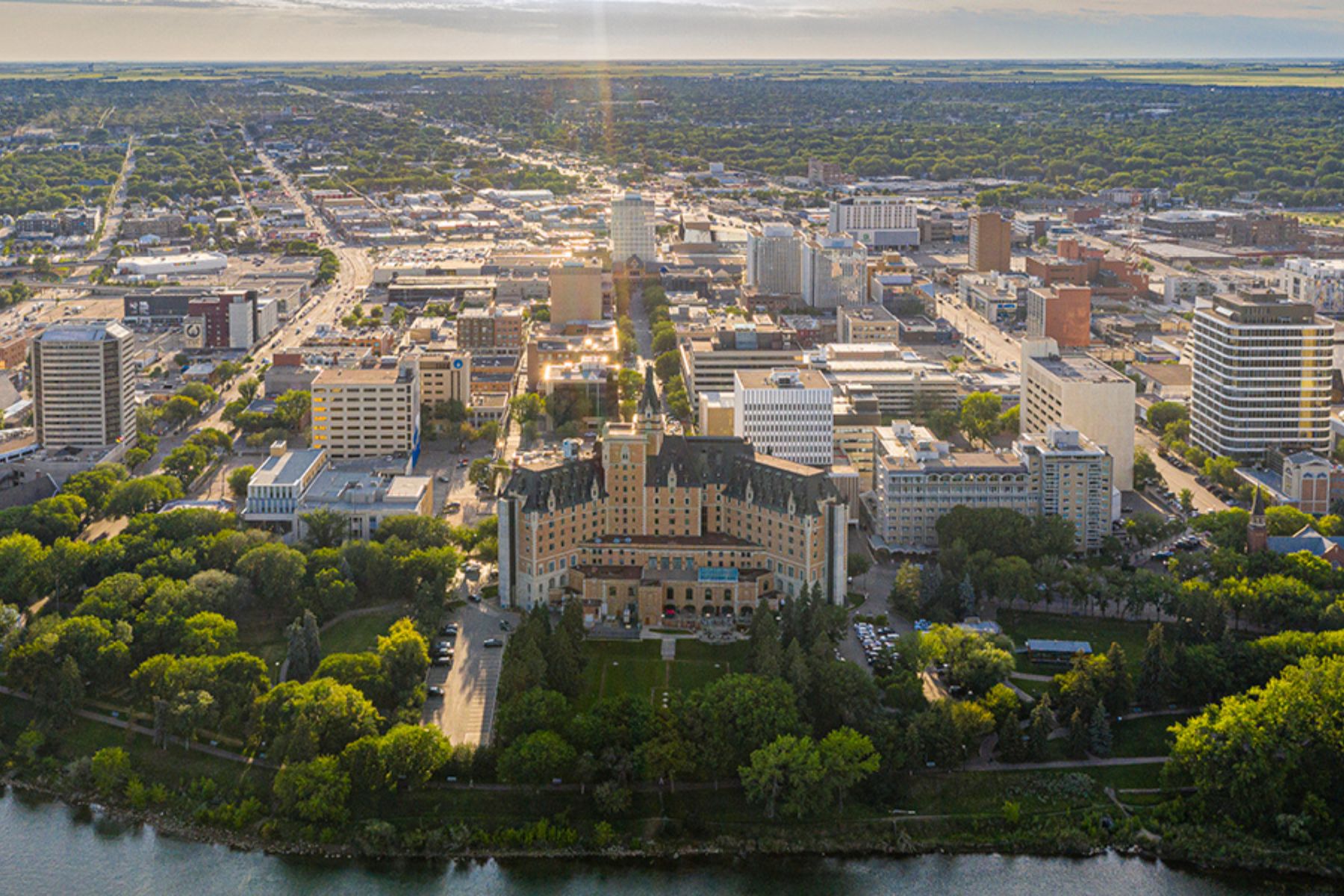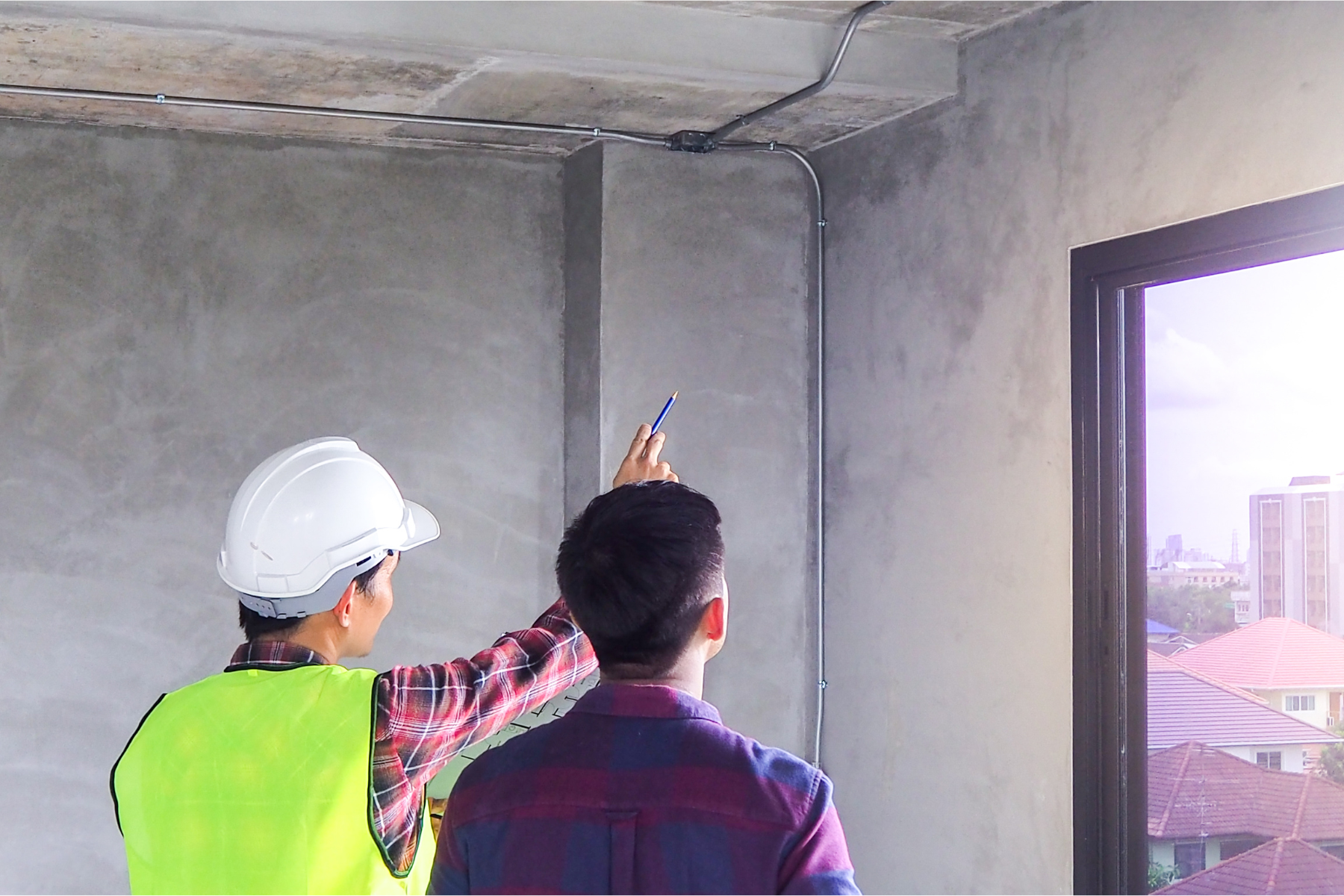Ontario’s 2023 Budget contains some bad news: we’re further away from meeting the provincial government’s 1.5 million housing target than we thought
Building 1.5 million homes is crucial for the province to keep up with population growth and demographic change, as confirmed by the SPI report Ontario’s Need for 1.5 Million Homes. Meeting this target was always a difficult challenge, as the province has never built more than 850,000 homes in any ten-year period. In fact, it has been over four decades since Ontario has built even 750,000 units (or half of the current target). Between the 4th quarter of 1972 and the 3rd quarter of 1982, 757,369 homes were built in the province. To put that into context, this roughly coincides with the broadcast run of the television show M*A*S*H (September 17, 1972, to February 28, 1983).
The specific goal made by the province is to have 1,500,000 million housing units of every form – from single-detached homes to studio apartment units – built between the beginning of 2022 to the end of 2031. In 2022, roughly 96,000 homes were started and 72,000 were completed in Ontario, according to Canadian Mortgage and Housing Corporation data. This is well under the 150,000 average required by the target.
The 2023 Budget & Its Impact on the Target
In the previous budget, private sector economists forecasted the province would start 259,100 housing units between 2023-2025, an average of 86,400 annually. In the current budget, as shown in Figure 1, that figure has been reduced to 242,300, an average of 80,800, thanks to deteriorating economic conditions and higher interest rates.

If these projections prove accurate, Ontario will have started only 338,400 homes in the first four years. To hit 1.5 million starts in ten years, Ontario would need to average 193,600 starts for 2026-31. The province has never reached 100,000 starts in a single year. And the province’s target is for completions, not starts.
Rapid, exponential growth will be required to hit a 1.5 million target. Given these forecasts, one pathway to hitting a 1.5 million start (not even completions) would be for starts to increase 25%, year-over-year, for every year after 2025. This growth pathway would lead to 1.502 million homes being started from 2022-31, with 315,475 of those coming in 2031 alone, as shown by Figure 2.

The Six Things Needed to Meet the Target
Call it a moonshot, 25% compounded annual growth will require radical action. Specifically, it will require all three levels of government to work together with builders, developers, and the higher education system to co-design a system that addresses six critical needs to build more homes:
- Coordination: No one actor in the system can ensure that housing completions keep pace with population growth. All levels of government, the higher education sector, builders, developers, and the non-profit sector all play vital roles. This requires actors in the system to share data, coordinate their actions, and keep each other accountable
- Ability: Building homes requires sufficient labour, materials, equipment, land, and capital. Not having enough plumbers, bathtubs, or money to pay for plumbers or bathtubs will prevent the necessary quantities of homes from being built.
- Viability: Or, as developers ask, “will it pencil?” For-profit builders and developers will not build unless it makes economic sense for them to do so. Revenue from building homes must sufficiently exceed the costs, which is particularly challenging when we also need homes to be affordable to Ontario families across the income spectrum.
- Productivity: There are likely some inputs, particularly types of skilled labour, in homebuilding where we cannot double or triple them in such a short period of time. Homebuilding in Ontario needs to be more productive and innovative. By being more productive and innovative, we can build more housing with fewer inputs, increasing the ability and viability of building homes.
- Permission: The regulatory environment needs to allow housing to be built, with minimal delays, while also producing them safely, protecting the environment, and creating great communities for all ages.
- Accelerating Non-Market Housing: There are housing needs that the market cannot meet. These needs require governments and not-for-profit actors to build everything from supportive living housing units to student residences – and do so in sufficient quantities.
We are already in year two of the ten-year target. If there is any hope of coming close to building 1.5 million homes in ten years, substantial reforms that are created collaboratively are needed immediately.








